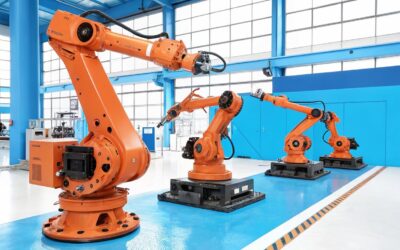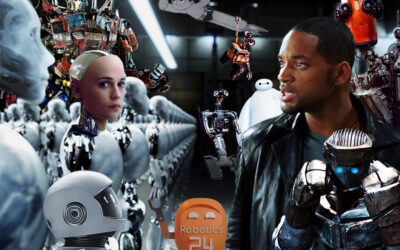Plural ➝ Human-Robot Interactions
- Human-robot interaction (HRI) is the study of the interaction between humans and robots, and encompasses the design, implementation, and evaluation of robots that work alongside or interact with people.
Etymology
The term HRI “human-robot interaction” is formed by the combination of “human” and “robot interaction”
The field emerged in the late 20th century as robots began to be increasingly integrated into society.
Synonyms
Human-Machine Interaction (HMI), Human-Computer Interaction (HCI), robot-human interaction
Antonyms
Robot-robot interaction, machine-machine interaction, Human-Human Interaction
Pronunciation
/ˈhjuːmən ˈrəʊbət ˌɪntərˈakʃən/
Related terms
Robot – Natural Language Processing (NLP) – Human–Robot Interface – Human-robot collaboration – Human-robot communication – Human-robot cooperation
Example Sentences
- Human-robot interaction is crucial in the design of cobots for manufacturing processes.
- Researchers are developing new techniques to improve human-robot interaction in healthcare settings.
- The success of a teleoperated robot depends significantly on the quality of human-robot interaction.
Curiosities
In 2015, a hitchhiking robot named “hitchBOT” was created to explore human-robot interaction in a social context. It successfully hitchhiked across Canada and parts of Europe but was damaged in the United States.
The “RoboCup” is an annual international robotics competition aimed at promoting robotics and AI research, with a focus on human-robot interaction.
Quotations
“HRI is an inherently interdisciplinary field that studies how humans and robots interact, communicate, collaborate, assist, and learn from each other.”
MIT Media Lab
“Robots are not our enemy – our enemy is our own intelligence, driving the development of technology without wisdom.”
Max Tegmark, Life 3.0: Being Human in the Age of Artificial Intelligence
“The new challenge is not how to communicate with robots but how to live with them.”
Sherry Turkle, Alone Together: Why We Expect More from Technology and Less from Each Other
Historical References
- In the 1950s, Joseph Engelberger and George Devol developed the first industrial robot, Unimate, paving the way for the development of HRI.
- In the 1980s, the MIT Media Lab initiated the HRI research field with a focus on developing robots that could interact with humans.
- In 1996, Honda introduced the humanoid robot P3, marking a significant milestone in HRI research and development.
Fields of applications
Examples of applications that use HRI include service robots in healthcare and hospitality, assistive robots for people with disabilities, and educational robots that help teach students.
HRI can also be used in industrial settings, such as manufacturing and logistics, where robots can collaborate with humans to perform tasks.
Frequently Asked Questions
What are the main goals of human-robot interaction?
The main goals of human-robot interaction are to design, implement, and evaluate robots that can work alongside or interact with people in a safe, effective, and efficient manner.
This includes ensuring that robots are easy to use and understand, that they can communicate effectively with humans, and that they are able to adapt to the needs and preferences of the people they interact with.
Who studies human-robot interaction?
Human-robot interaction is studied by a variety of researchers and engineers, including computer scientists, psychologists, human-factors experts, and roboticists, as well as experts in other related fields such as cognitive science and sociology.
How does HRI work?
HRI involves the use of various technologies, such as sensors, actuators, and communication systems, to enable robots to perceive and respond to human input and behavior.
This includes developing algorithms for natural language processing and computer vision, as well as designing user interfaces and interaction protocols that are intuitive and effective for humans.
What are some challenges associated with developing HRI?
Some challenges associated with developing HRI include the complexity of human behavior and interaction, as well as the need to ensure that robots are safe, reliable, and trustworthy in their interactions with humans.
Additionally, there are ethical and social considerations related to the use of robots in various contexts.



